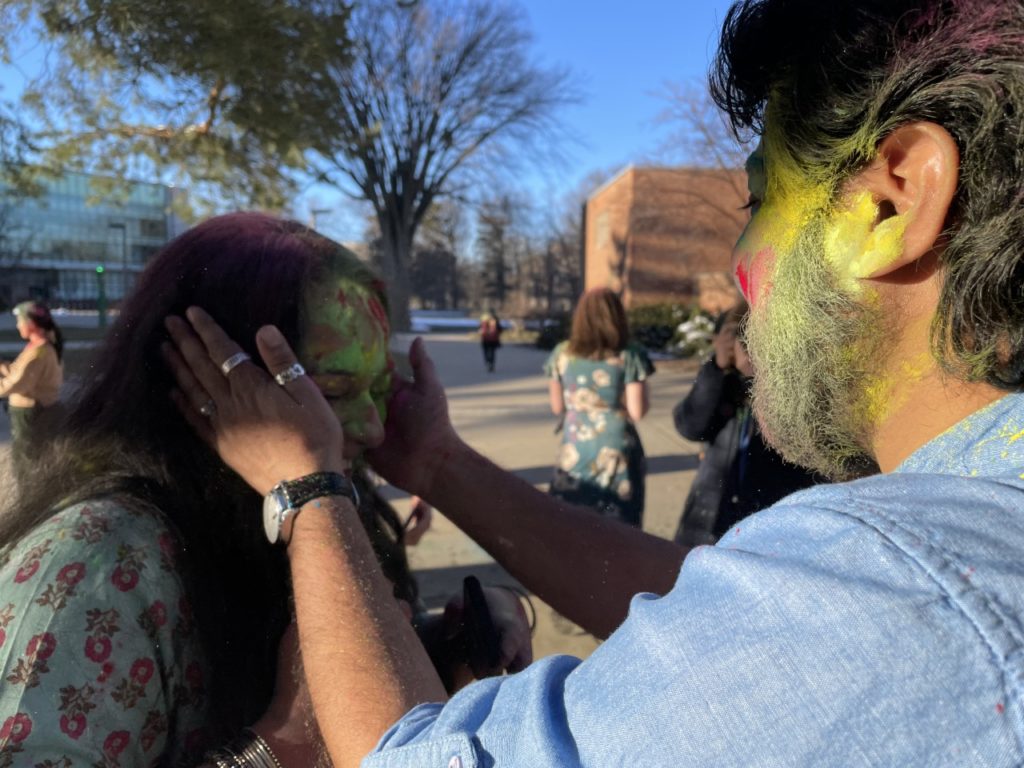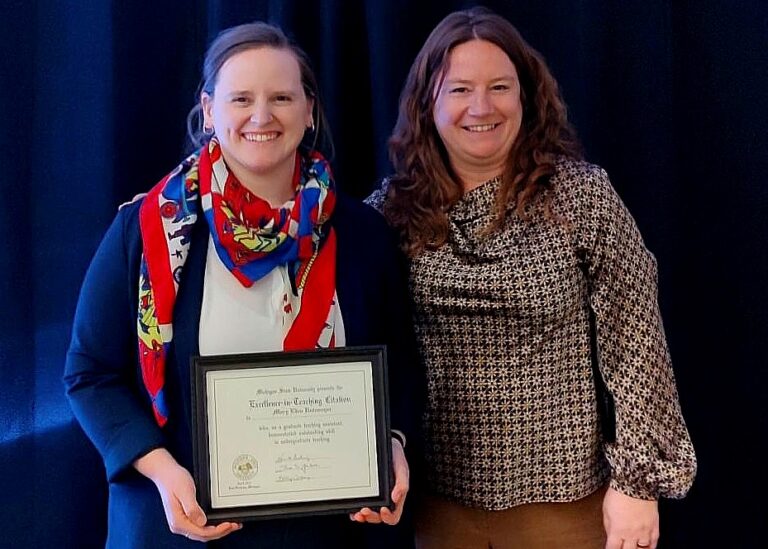
By Aishwarya Gupta, Fulbright India Scholar
Did you see those smiling, colorful faces in the pictures? Isn’t it amazing to see people who do not look like us wanting to reciprocate and share the joys of life with each other? From pinks to reds and yellows to greens, the Spartan atmosphere is resplendent with all beautiful hues. This year, as we celebrated Holi, the festival of colors, we also celebrated the colors of diversity and inclusion at the “Chai & Chat” event of the Indian and South Asian Studies, funded by the Asian Studies Center at Michigan State University on March 14, 2023.
Welcoming the harvest and the spring season during the month of March, and bidding farewell to the cold winter, the vibrant occasion of Holi not only fills our daily humdrum of life with colorful shades but also marks a celebration of life in the color palette itself. Embracing love, happiness, harmony, a sense of belonging, togetherness, and bonhomie, Holi celebrates the victory of good over evil, referencing the Hindu legend of Holika and Prahlad. The playful magic of colors is a joyous time when people from all backgrounds come together to cherish the values of forgetting and forgiving their past grievances, prejudices, differences, discrimination, or any kind of bitterness and ill feelings.
The festive event kicked off with watching Holi songs which was then followed by Dr. Rajiv Ranjan’s exuberant speech amid the rhythm of dholak, that is, drums, that the Holi celebrations are more a time for fun and excitement for anyone and everyone, not just a Hindu religious observance. He suggested that Holi might be celebrated with various names and ways with following different traditions, but its spirit of compassion and community is exactly what makes it so special and unique for many across the globe. Subsequently, a short presentation was given on the ubiquitous forms of celebration such as Holi parties, gulal stories, or color runs, and bonfires, along with a crowd of close to eighty plus Spartans feasting on mouth-watering delicacies like Biryani, Gulab Jamun (sweet dessert), and soft drinks made the evening even more vivid, charming, and glorious with the exchange of elaborate greetings of “Holi Hai” (It’s Holi) and “Happy Holi.”

Similar to Thailand’s Songkran festival, where people take to the streets with water guns, this holiday is yet far more colorful. When bright colors of the rainbow were smeared and strewn across faces, our skin, hair, and clothing all looked the same, colors that represented inclusivity in diversity, colors that represented “everyone is equal.” With the sky painted and the air abuzz with mesmerizing hues, each Holi color signifies special emotions encouraging one to start afresh with feelings of unity, equality, and oneness.
Here’s what we feel:
- Red symbolizes Purity and Love
- Orange symbolizes Endurance
- Purple is for Magic
- Blue is for Calmness
- Green means Vitality and Prosperity
- Yellow means Happiness
- Pink symbolizes Love, Kindness, and Compassion

This festival of colors is revered as the most auspicious and positive one. It’s a festival that brings friends and family together to celebrate in unison the end of bad times and the beginning of good positivity.
Therefore, I feel extremely grateful and honored to organize this event, especially for my supervisors and the MSU Asian Studies Center, who have supported and contributed to making this event a success. With everyday shared experiences, we all are constantly learning and evolving, and compassionately listening, understanding, accepting, and respecting each other, adding a positively sustainable dimension to our way of being.
So, what are you waiting for? Get engrossed in its true culture, grab some beautiful colors, and make your friend’s face into a canvas where you can paint on your new harvest.



